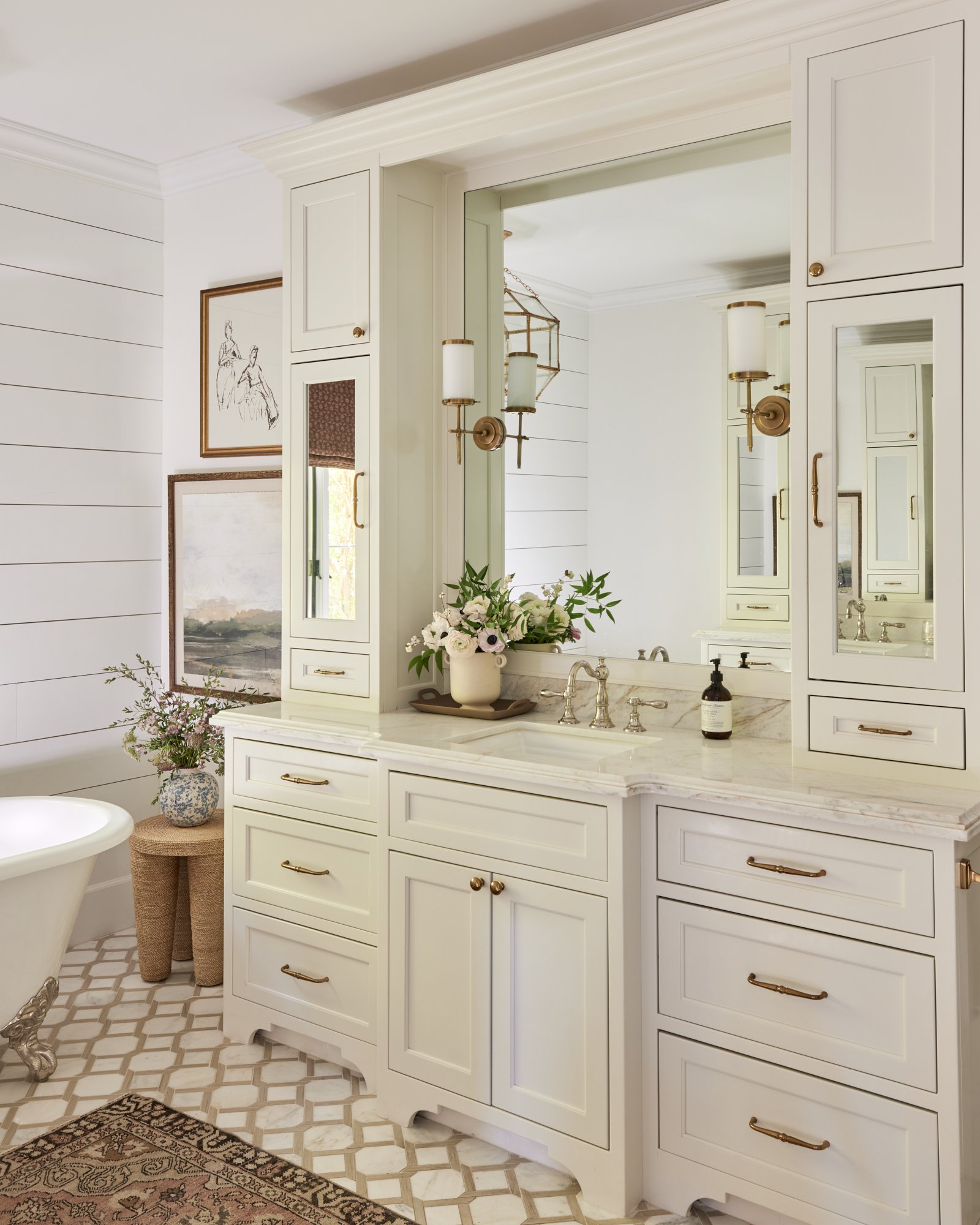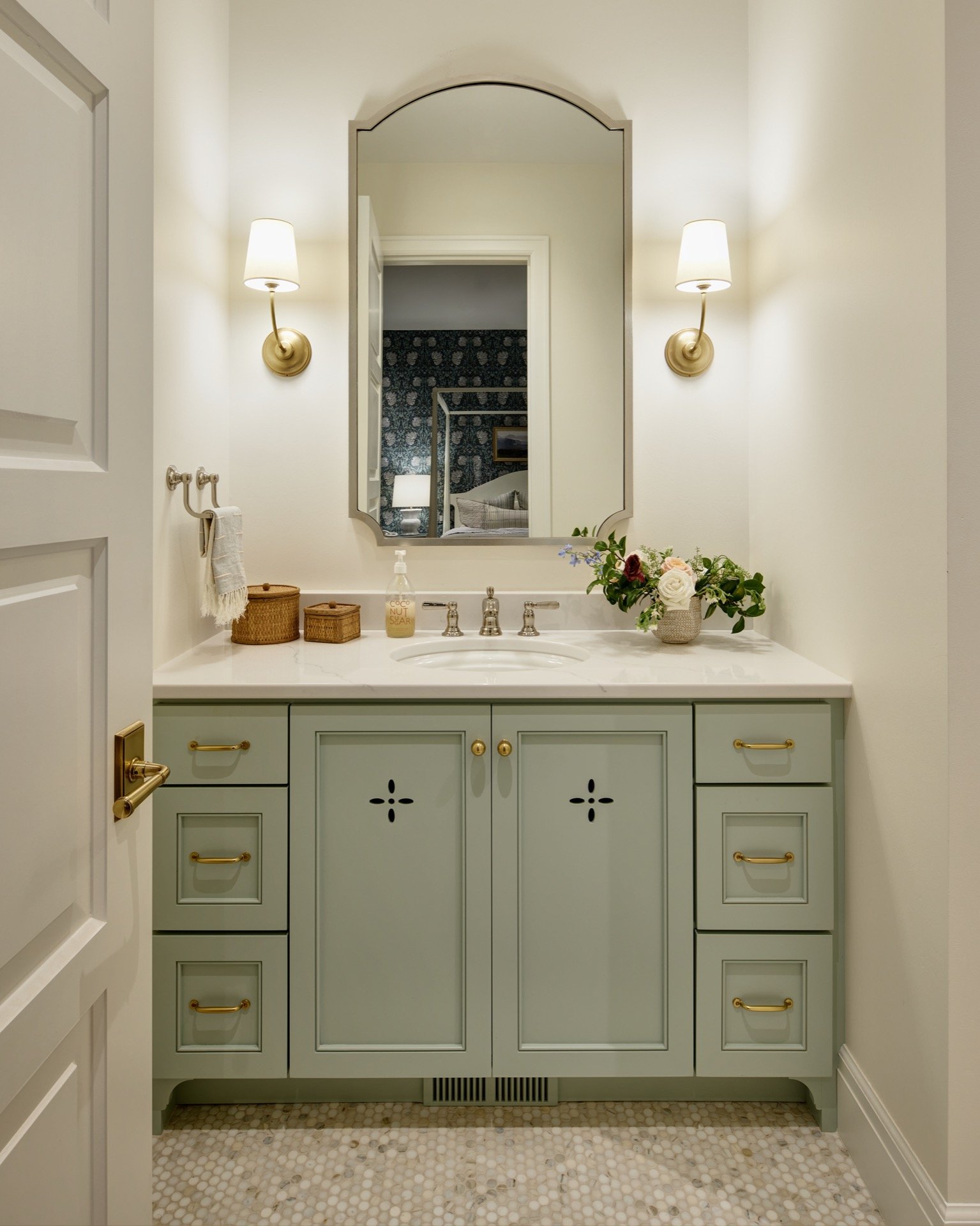How To Mix Metal Finishes In Your Bathroom
One of the most common questions we hear is: “How do you mix metals in the bathroom?”
It’s a great question and an important one. Done right, mixed metals can make a bathroom look elevated and intentional. Done wrong, it can feel mismatched or chaotic.
The good news? With a few simple ground rules, you can mix finishes in a way that feels cohesive and timeless.
Rule #1: Pick Two
When it comes to mixing metals, less really is more. Two finishes is the sweet spot in a bathroom.
Think of it like choosing a lead actor and a supporting role. Your main metal (for example, polished nickel) will carry the majority of the finishes, while your accent metal (like brass) pops up in just enough places to make the space interesting.
Go beyond two finishes, and the room can start to feel chaotic like it’s trying to be too many things at once. Keeping it to two makes the design feel intentional and elevated.
In the photo below, we chose brass for the hardware and lighting, while the faucet and feet on the tub are a polished nickel.
Rule #2: It’s All About Balance
Where you place your finishes is just as important as which ones you choose.
If you cluster all of one metal in a single area, it can look like an afterthought. A great way to check yourself during the planning phase is to create a simple mood board with photos of all your finishes: plumbing fixtures, lighting, hardware, and so on. Seeing them together on one page makes it easy to spot whether they complement each other or if one feels too dominant (or barely noticeable).
Notice how in the bathroom below, the brass and black combination feels balanced. Black shows up four times: on the mirror, sconces, faucets, and towel holder. Brass appears three times: on the door handle, sconces, and cabinet hardware on both sides.
Because each finish is repeated and distributed across the room, it creates a sense of symmetry and rhythm that feels pleasing to the eye.
Rule #3: Keep Fixtures Consistent
When it comes to plumbing fixtures and accessories (faucets, shower heads, towel hooks, toilet paper holders, etc.) stick to a single finish.
Mixing finishes on these elements can quickly feel chaotic. Choosing one finish ensures a clean, cohesive look, even when you’re mixing metals elsewhere in the space.
Think of it as a grounding point: your faucets, shower fixtures, and accessories act as anchors for the design. You can still layer in a second metal elsewhere (such as lighting or cabinet hardware), but keeping the fixtures consistent makes the overall mix feel intentional and polished.
Our Favorite Pairings
Not sure where to start? Here are a few of our tried-and-true combos:
Brass + Polished Nickel → A timeless mix of warm and cool that always feels fresh.
Black + Brass → Bold and high-contrast with a modern edge.
Black + Polished Nickel → Sleek, cool, and sophisticated.
P.S. Notice how chrome never made the list? That’s not an accident. At LWD, it just doesn’t hit the elevated note we’re after it can lean a little cheap. We prefer finishes with warmth and character that play well with the rest of the design.
Mixing metals in a bathroom doesn’t have to be intimidating. Stick to two finishes, distribute them evenly, and choose opposites that complement each other. With those three rules in mind, you’ll create a space that feels polished, cohesive, and beautifully layered.
And if you’re curious about how to take these same principles into your kitchen, check out our blog post on mixing kitchen metals here.
Photographer: John Woodcock





